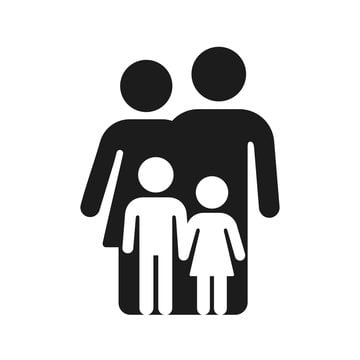Cultivating Peacemakers: Empowering Students with Conflict Resolution Skills
In today's complex world, conflict is inevitable. Equipping children with robust conflict resolution skills isn't just beneficial; it's crucial for their growth into empathetic, compassionate, and responsible adults. Schools play a pivotal role in nurturing this essential life skill, fostering environments where peaceful resolutions are not only valued but actively practiced. This article explores fifteen effective strategies schools can implement to cultivate peacemakers within their communities.
1. Role-Playing: Experiencing Diverse Perspectives
Engaging role-playing exercises allow students to explore various perspectives within conflict scenarios. By enacting different roles, they gain a deeper understanding of the emotions and motivations involved, facilitating the identification of common ground and mutually acceptable solutions. This experiential learning fosters empathy and problem-solving abilities.
2. Storytelling: Learning from Narrative Examples
Children's literature provides invaluable tools for teaching conflict resolution. Books like "The Recess Queen" offer relatable narratives that spark discussions on character choices, conflict escalation, and effective resolution strategies. Analyzing these narratives helps students critically assess situations and consider alternative approaches to conflict.
3. Mediation: Developing Peacemaking Skills
Training students in mediation techniques empowers them to act as impartial facilitators among their peers. This process cultivates responsibility, problem-solving skills, and active listening, while simultaneously fostering a sense of shared responsibility for conflict resolution within the school community.
4. Active Listening: Beyond Mere Hearing
Active listening is fundamental to effective conflict resolution. Teaching students to truly listen, to accurately paraphrase what they hear, and to validate the feelings of others fosters empathy and understanding, laying the groundwork for constructive communication.
5. Empathy Development: Understanding Diverse Viewpoints
Empathy forms the cornerstone of peaceful conflict resolution. By encouraging students to consider the perspectives and feelings of others, they learn to approach conflicts with compassion and understanding, resulting in more collaborative solutions. This promotes respectful interaction and strengthens relationships.
6. Peer-Led Discussions: Sharing Experiences, Building Solutions
Facilitating open discussions among students allows them to share their experiences with conflict, learn from each other's successes and mistakes, and collaboratively brainstorm effective resolution strategies. This peer-to-peer learning fosters a supportive and collaborative environment conducive to conflict resolution.
7. Nonviolent Communication: Expressing Needs Respectfully
Teaching students nonviolent communication skills equips them to express their thoughts and feelings without resorting to aggression or violence. This involves learning to articulate needs clearly and respectfully, while simultaneously considering the needs of others, promoting mutual understanding and respect.
8. Celebrating Cultural Diversity: A Global Perspective on Conflict
Recognizing and valuing cultural diversity broadens students' understanding of diverse approaches to conflict resolution. This fosters appreciation for varied perspectives and helps them navigate conflicts in a more inclusive and sensitive manner, promoting tolerance and respect for differences.
9. Classroom Meetings: Fostering Open Dialogue and Collaboration
Regular classroom meetings provide a safe and structured platform for students to voice concerns, discuss conflicts, and collaboratively develop solutions. This promotes open communication, builds community, and empowers students to actively participate in the conflict resolution process within their classroom.
10. Collaborative Problem-Solving: Teamwork for Peaceful Outcomes
Encouraging collaborative problem-solving highlights teamwork and compromise as essential components of conflict resolution. Students learn to work together, share ideas, and negotiate solutions that address everyone's needs, promoting collaborative skills and mutual respect.
11. Anti-Bullying Initiatives: Promoting a Culture of Respect and Safety
Implementing comprehensive anti-bullying initiatives educates students about the detrimental effects of bullying and provides them with strategies for peaceful intervention and reporting. This creates a school environment where bullying is unacceptable and conflict is proactively addressed, fostering a safe and inclusive learning environment.
12. Teaching Forgiveness: Healing and Reconciliation
Understanding and practicing forgiveness is integral to effective conflict resolution. Discussions about forgiveness help students process their emotions, heal from conflict, and move forward constructively. This fosters reconciliation and strengthens relationships, promoting emotional well-being.
13. Recognizing Positive Behaviors: Reinforcing Peaceful Actions
Acknowledging and praising students' positive conflict resolution efforts reinforces the importance of these skills. Positive reinforcement motivates students to continue practicing and refining their peacemaking abilities, promoting positive behavioral patterns.
14. Celebrating Differences: Fostering Inclusivity and Understanding
Organizing multicultural events and activities celebrates the diversity within the school community. This cultivates an inclusive environment where differences are valued and conflicts are less likely to stem from misunderstandings or prejudice, promoting a harmonious and respectful learning community.
15. Continuous Support: A Collaborative Approach to Peacebuilding
Consistent support for teachers, parents, and students is crucial for long-term success in conflict resolution. This includes providing resources, training, and ongoing professional development to ensure the effective implementation and reinforcement of these essential life skills. This collaborative approach ensures sustained effectiveness.
Teaching children conflict resolution is an ongoing journey, requiring consistent effort and a collaborative partnership among all stakeholders. By integrating these strategies into the school environment, we empower the next generation of peacebuilders, contributing to a more harmonious and understanding world. How can your school further enhance its conflict resolution programs?





